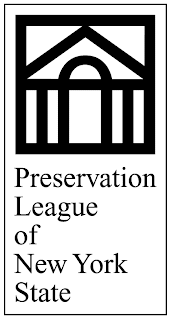 When the New York State Legislature approved the final piece of legislation to close out the State Budget on August 3, they also put the brakes on a number of desperately-needed revitalization projects.
When the New York State Legislature approved the final piece of legislation to close out the State Budget on August 3, they also put the brakes on a number of desperately-needed revitalization projects.
In Part Y of the enacted Budget, tax credits for some thirty state business and economic development programs will be deferred to help balance the state spending plan, including incentives for the rehabilitation of commercial properties.
Specifically, New York State Rehabilitation Tax Credits earned between 2010 and 2012 exceeding $2 million in value will be deferred on the following schedule:
* In 2013, 50% of the balance of credit value over $2 million will be available.
* In 2014, 75% of the remaining balance of credit value will be available.
* In 2015, 100% of the remaining balance of credit value will be available.
Deferring incentives of the New York State Rehabilitation Tax Credit program will prevent projects from securing financing, as backers will no longer be assured of a timely return on investment, and will be severely limited in the number of projects in which they can invest.
“As the economic recovery continues to make slow progress at the national level, the New York State Rehabilitation Tax Credit Program provided a glimmer of hope for our beleaguered upstate cities,” said Jay DiLorenzo, President of the Preservation League of New York State. “Now, many of the projects that could transform our struggling downtowns are effectively on hold.”
Homeowner rehabilitation projects are capped at $50,000 and therefore will not be affected.
“Our efforts to protect the New York State Rehabilitation Tax Credit program in last week’s final budget negotiations fell just short,” said Daniel Mackay, the League’s Director of Public Policy. “The Senate and Assembly will be returning to Albany in the coming weeks, and we will continue our advocacy in hopes of securing full funding for the rehabilitation tax credit at that time.”
According to DiLorenzo, “When the expanded Rehabilitation Tax Credit program was adopted in 2009, a number of modifications were made to reflect New York State’s difficult financial situation. This program has already been adapted to work in a tough fiscal climate. If further changes are imposed upon the program, it will lose all effectiveness as an economic development tool. The tax credits should be allowed to work, unimpeded, in distressed municipalities and neighborhoods across New York State.”